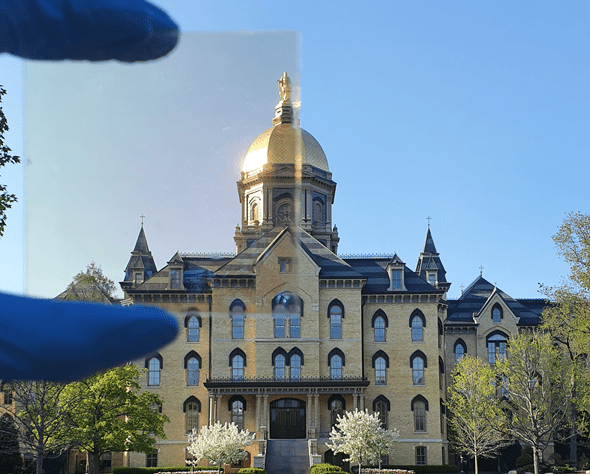A new clear coating wants to help limit climate change by slashing building cooling costs.

This last year has not been a stranger to heat waves and droughts. Such events are expected to become more intense as well as more common as man-made emissions continue to build up in the atmosphere. Many of us, faced with such dire staits, turned the air conditioning unit on full blast and didn’t touch it again until late autumn.
And that might actually be part of the problem. The electrical energy feeding our cooling systems is still, in large part, produced by burning fossil fuels. We therefore find ourselves in a dangerous feedback loop: emissions warm our planet, so we turn on air conditioning, which leads to more emissions, and more warming.
But new research hopes to nip that loop in the bud with technology that could lower the temperature inside buildings without using a single watt of energy.
Windowed against the heat
The team, comprised of members at the University of Notre Dame, USA, and the Kyung Hee University, Republic of Korea, who designed the new material with help from advanced software and artificial intelligence.
The material itself is a transparent coating that can be applied to windows in order to passively reduce the temperature inside buildings. It achieves this by blocking the ultraviolet and near-infrared spectrum of incoming sunlight. This is the part of sunlight that passes through windows and heats up enclosed rooms. It does all this while allowing visible light to move through freely.
According to previous research cited by the authors, building cooling accounts for a whopping 15% (one-sixth) of global energy consumption — and, thus, around 15% of global greenhouse gas emissions. The coating could help slash that figure by helping to reduce indoor temperatures without using energy at all.
Furthermore, the team says we could reduce energy use even more if the material can be tweaked to radiate energy back into the environment at wavelengths that escape the Earth’s atmosphere into space. Essentially, they envision that further versions of this material will beam heat incoming from the sun right back into the cosmos.
If the material sounds a bit surreal, well, it is, in a way. Designing something that blocks only part of sunlight in a certain way while leaving the rest untouched is no easy feat, and the team enlisted the help of some serious computational power and artificial intelligence to produce their “transparent radiative cooler”, or “TRC” for short.
Design of this material started with extensive computer simulations of various candidate structures. These included various combinations of thin, alternating layers of silicon dioxide, silicon nitride, aluminum oxide, or titanium dioxide, over a glass base. The whole stack was then topped with a thin film of polydimethylsiloxane, a widely-used polymer that protects the layers below.
The team iterated on the stack’s design based on the results of each round of computer simulation, changing the type, order, and combination of layers. Quantum computing was used to crunch the massive calculations required for the simulations. The team explains that quantum computers, which store data in subatomic particles, are much more effective for such applications than traditional computers as they can test all possible combinations in a fraction of a second.
Overall, all that computing work paid off. Once fabricated, the coating was able to outperform conventionally-designed TRCs and one of the leading heat-reduction glasses that is commercially available today.
Based on the team’s estimation, the new coating could reduce cooling energy needs by up to 31% in hot, dry cities. Car and truck windows could be treated with the same coating to reduce cooling energy needs for vehicles, energy which also comes from fossil fuels burned in the engine to recharge batteries.
Technology that can help us live more comfortable lives while using less energy than before is exactly what we need in order to stave off climate change. For now, it remains to be seen whether the coating will be a commercial success or not — we still don’t have a reliable estimate of its final production cost. But, hopefully, it will be — and we’ll start seeing it on windows everywhere.
The paper “High-Performance Transparent Radiative Cooler Designed by Quantum Computing” has been published in the journal ACS Energy Letters.


